| Biblical Perspectives Magazine, Volume 22, Number 47, November 15 to November 21, 2020 |
Armageddon
Revelation 15:5–16:21
By Dr. Derek Thomas
After this I looked and in heaven the temple, that is, the tabernacle of the Testimony, was opened. Out of the temple came the seven angels with the seven plagues. They were dressed in clean, shining linen and wore golden sashes around their chests. Then one of the four living creatures gave to the seven angels seven golden bowls filled with the wrath of God, who lives for ever and ever. And the temple was filled with smoke from the glory of God and from his power, and no one could enter the temple until the seven plagues of the seven angels were completed.Then I heard a loud voice from the temple saying to the seven angels, "Go, pour out the seven bowls of God's wrath on the earth."
The first angel went and poured out his bowl on the land, and ugly and painful sores broke out on the people who had the mark of the beast and worshiped his image.
The second angel poured out his bowl on the sea, and it turned into blood like that of a dead man, and every living thing in the sea died.
The third angel poured out his bowl on the rivers and springs of water, and they became blood. Then I heard the angel in charge of the waters say:
"You are just in these judgments, You who are and who were, the Holy One,
because You have so judged; for they have shed the blood of Your saints and prophets, and You have given them blood to drink as they deserve."
And I heard the altar respond:
"Yes, Lord God Almighty, true and just are Your judgments."
The fourth angel poured out his bowl on the sun, and the sun was given power to scorch people with fire. They were seared by the intense heat and they cursed the name of God, who had control over these plagues, but they refused to repent and glorify Him.
The fifth angel poured out his bowl on the throne of the beast, and his kingdom was plunged into darkness. Men gnawed their tongues in agony and cursed the God of heaven because of their pains and their sores, but they refused to repent of what they had done.
The sixth angel poured out his bowl on the great river Euphrates, and its water was dried up to prepare the way for the kings from the East. Then I saw three evil spirits that looked like frogs; they came out of the mouth of the dragon, out of the mouth of the beast and out of the mouth of the false prophet. They are spirits of demons performing miraculous signs, and they go out to the kings of the whole world, to gather them for the battle on the great day of God Almighty.
"Behold, I come like a thief! Blessed is he who stays awake and keeps his clothes with him, so that he may not go naked and be shamefully exposed."
Then they gathered the kings together to the place that in Hebrew is called Armageddon.
The seventh angel poured out his bowl into the air, and out of the temple came a loud voice from the throne, saying, "It is done!" Then there came flashes of lightning, rumblings, peals of thunder and a severe earthquake. No earthquake like it has ever occurred since man has been on earth, so tremendous was the quake. The great city split into three parts, and the cities of the nations collapsed. God remembered Babylon the Great and gave her the cup filled with the wine of the fury of his wrath. Every island fled away and the mountains could not be found. From the sky huge hailstones of about a hundred pounds each fell upon men. And they cursed God on account of the plague of hail, because the plague was so terrible.
"Then they gathered the kings together to the place that in Hebrew is called Armageddon.."
Doomsday! – The Battle of Armageddon!
Interpreters of Revelation who see it as one huge cryptic puzzle to be solved by the initiated, the kind that have equated "the ten horns of the beast" in chapter 13 as signaling the European Common Market, or the "mark of the beast" and "666" in the same chapter as anything from credit cards to the internet, and the Antichrist figure of 6:2 as any one of long line of candidates from Adolf Hitler, to Benito Mussolini, to Henry Kissinger and Bill Clinton and even Timothy McVeigh. This crystal ball-view of the book of Revelation, also interpret the gathering of "the kings of the east" and the Battle of Armageddon in this section (16:12-16) as a reference to communist China. The problem with such an approach is the way in which each generation is doomed to interpret the book from events current within its own time. There is no end to the possibilities that can arise.
In the opening chapter of Revelation John has given us three clues as to what the book of Revelation is about: it is, firstly, a "revelation of Jesus Christ" (1:1), secondly, it "testifies to everything he saw" (1:2), and thirdly, it is a word of "prophecy" (1:3). John has faithfully recorded the details of what he saw, in the order in which he saw them, unfolding as these details do the redemptive and judgmental purposes of God throughout history. The book of Revelation tells us what Jesus intends to do for His people and against His enemies as He brings to fruition the promise given to Peter at Caesarea Philippi: "On this rock I will build My church and the gates of Hades will never overcome it" (Matt. 16:18). History will unfold in one terrible scene of judgment after another, but Christians are to be assured that it is His Story! Nothing happens without God willing it to happen, and willing to be happen in the way that it happens, and willing it to happen before it happens. Since the description of the judgments which unfold following the seven bowls are particularly graphic and disturbing, it is all the more important to recall that Jesus Christ is in complete control of everything.
Following the pattern outlined already, 15:5 begins a new section. In a pattern of seven visions that began at 12:1 and ended with the first half of chapter 15, John has already hinted at what this new section will be about: "the seven last plagues" (15:1; cf. 15:5). They are now further described as "seven golden bowls filled with the wrath of God" (15:7). We have already had the seven seals (6:1 – 8:5) and the seven trumpets (8:6 – 11:19) of wrath. Now the pattern is repeated once more. With language reminiscent of the Egyptian plagues in the opening chapters of Exodus, John describes a picture of judgment more graphic and terrifying than he has so far done.
Since these are last of the "sevens" in the book of Revelation, some (Futurists) see in these plagues descriptions of the final stages of history. Along similar lines, some understand these seven bowls as the content of the seventh trumpet (the trumpets being an expansion of the seventh seal). In that way the bowls represent a narrowing of the camera lens to pinpoint events at the closing stages of history. It is more likely, however, that the seals, trumpets and bowls depict the same events, but from different points of view, that is the unfolding of judgments upon the world characteristic of the entire period from the ascension of Christ to the Second Coming. Each group of seven recapitulates what has been seen before. The order implied in each group of seven is the order in which John saw them rather than a sequential, historical order in which they are to be fulfilled. What we have therefore in the bowls of wrath is yet another repetitive cycle of sevens, repeating and expanding upon the seven seals and seven trumpets (and possibly seven visions of chapter 12-14). One clue that this is indeed the case is the obvious reference at the end of each sequence of seven (the seventh seal, the seventh trumpet, the seventh bowl) to the Day of Judgment (for the seals: 6:12-17; 8:1; for the trumpets: 11:15-19; and for the visions of chapters 12-14: 14:8-11; and in this sequence of seven bowls, 16:17-21).
These are the "last" plagues (15:1), in the sense, perhaps, that they belong to the "last days". Based as they are upon the Egyptian plagues, these belong to the age of the Spirit (cf. 2 Cor. 3:8) rather than to day of Moses, to the new covenant rather than the old. Like the trumpets and the seals, the bowls of judgment cover the span of time up to the second coming and the inauguration of those events which culminate in the Day of Judgment it self. The bowls, however, appear to be more detailed than the earlier visions of wrath have been.
The Seven Bowls of Judgment
Verse 5 resumes the depiction given in verse 1 of 'the' seven angels and 'the' seven bowls. Before he sees the angels, John sees the temple, or 'tabernacle of the Testimony,' open. This is the heavenly equivalent of the tabernacle in the wilderness. It represented the presence of God amongst His people (Acts 7:44). Whenever the tabernacle contained the ark of the covenant, there was signaled both judgment and mercy. Now, however, the focus of attention is upon the Law and the impending judgment for infringement that will follow. The phrase is similar to that found in 11:19.
The seven angels emerge from the temple dressed in priest-like garments and are given the seven bowls, symbolic of the wrath of God that is to be poured out. The judgments do not come from the angels; they are only the messengers. Bowls of wrath are given to them. What is remarkable about this passage is the fact that not even the sinless creatures of heaven can stand in the presence of the revelation of God's holy wrath. The temple is filled with smoke (symbolic of God's power and glory 15:8) and God alone is able to withstand the fury of his unmitigated wrath, which is his reflex towards sin and unholiness.
The judgments follow the same order as those depicted by the trumpets in chapter 8: the earth, the sea, rivers, the sun, the realm of the wicked, the Euphrates, and the final judgment (following the same imagery of lightning, sounds, thunders, earthquake and great hail). The similarity is based upon the underlying similarity of the exodus plagues.
Like the trumpets, the bowl plagues are answers to the prayers of the martyrs in 6:9-11 for the vengeance of Almighty God upon their enemies. That such vengeance may arouse fears of injustice has already been alluded to by the reference to all of God's ways being "just" and "true" (15:3; 16:5,7). In response to the initial judgments, the angels express the justice of God's judgments. Everything about this scene is expressive of God's holiness. No one can say of God's judgments that they are unfair. These are acts of the "Holy One" (16:5.
The Recipients of the Judgments
Three categories may be singled out as recipients of the bowls of wrath.
1. Those who bear the mark of the beast and worship his image (16:2-9).
The cause of the first bowl of wrath is idolatry. It is poured on those who have the mark of the beast and worship his image (16:2; cf. 13:16-18). The number 666 is symbolic of absolute imperfection, and it represents the unbeliever who refuses to follow the Lamb and to acknowledge His Lordship. The effects of this first bowl are similar to that of the sixth Egyptian plague: boils and sores (Exod. 9:9-11).
Like the second trumpet (8:8-9), the imagery of the second bowl is that of death in a watery grave. The allusion is the turning of the Nile into blood and the consequent death of the fish (Exod. 7:17-21). But, whereas the effects of the trumpet's judgment was partial, the effect of the bowl's is total: "every living thing in the sea died."
Like the third trumpet (8:10-11), the third bowl is based on the Nile/blood judgment (Exod. 7:17-21). Again, the effect of this judgment, as in the second, is total. Charges of injustice as to these judgments are immediately met by the announcement of the "angel in charge of the waters" who declares that God is "just in these judgments" (16:5). It is an echo of the "righteous acts" of chapter 15 (v.4). A similar cry comes from another angel in verse 7, "Yes, Lord Almighty, true and just are Your judgments." A variation takes place in the formula ascribed to God: instead of the usual, "who was, and who is, and who is to come" (1:4, 8; 4:8; cf. 11:17) we now have, "who are, and who were, the Holy One." It is a signal that the one "who is coming" is holy and has already begun to reveal his holiness in acts of judgment. Once again, this third bowl is a direct answer to the prayer of the martyred saints in 6:10 for the vengeance of God as verse 6 and 7 make plain. This is a judgment upon the persecutors of God's people. The destruction envisioned seems to involve a frenzy of persecutors fighting amongst themselves and destroying one another (16:6).
The fourth bowl is poured on the sun causing it to "scorch people with fire" (16:8). Again it is the Lord who does this: it is He who "has control over these plagues" (16:9). This is the opposite of the beautiful imagery of Rev. 7:16, which promises that the sun will not smite, nor the heat destroy those who have sealed by God. It is a reminder of those words in Isaiah 49:10:
"They will neither hunger nor thirst, nor will the desert heat of the sun beat upon them."
This judgment does not bring about repentance, but a continuation of the blasphemy that had initiated it in the first place.
2. The dragon, the beast and the false prophet.
The fifth bowl is poured upon the "throne of the beast." The very seat of his government is affected, plunging his kingdom into darkness. It is reminiscent of the plague of darkness over Egypt. In the Exodus story, the plague was a direct attack upon Pharaoh who was believed to be an incarnation of the sun god, Ra. The Fifth bowl identifies God's total sovereignty over Satan and his forces. Again, despite the intense imagery of pain and suffering, there is no repentance (16:11).
The sixth bowl brings us to the battle of Armageddon (16:16). The imagery is introduced using language that reminds us of the drying up of Red Sea at the time of the exodus, only this time it is the river Euphrates. Old Testament prophets had spoken of the drying of the river (Isa. 11:15; 44:27; Jer. 50:38; 51:36) and there is a fulfillment of it in the history of King Cyrus who diverted the river allowing his army to cross the river, enter Babylon unexpectedly and defeat it. The victory of Cyrus over Babylon was to be the means of Israel's deliverance from exile. The fact that Isaiah refers to Cyrus as "coming from the east" (Isa. 41:2) leads the way here in Revelation 16 for a similar picture, this time of "kings from the East" who cross the dry bed of the river Euphrates.
That a figurative interpretation is order can be seen from glancing at 17:1, where the Babylonian harlot "sits on many waters," which is another way of describing "the great river Euphrates and its water" (16:12). The "many waters" of 17:1 are further explained as "peoples, multitudes, nations and languages" (17:15). Thus, the section in 17:15-18 is an expansion of 16:12. Literalists, who usually see specific interpretations of these passages, often fall foul of their principle by suggesting that Babylon here means Rome or some other entity!
The result of the pouring out of the sixth bowl is that three opponents of the saints rise in hostility: the dragon, the beast and the false prophet (i.e. Satan, Satanic politics and Satanic religion). This is the first occurrence of "false prophet" and is to be understood as the second beast of chapter 13, the beast of the earth. This trinity of evil spit out three frog-like spirits who deceive the people into idolatry. They are able to perform miracles (as the second beast, or false prophet of chapter 13 is said to perform "great and miraculous signs" (13:13)). That these frogs affect only the kings of the earth is a reminder that in the exodus story, it was the king (Exod. 8:3-4) who was first affected.
By means of this great disguise, the kings of the earth are gathered for "the battle on the great day of God Almighty" (16:14). This finds echoes in later chapters of Revelation, particularly 19:19 and 20:8. It is the same war that has been referred to earlier in 11:7, but is now taking on a greater significance.
It is the battle of Armageddon, in which the forces of the dragon and beast are destroyed. It will be elucidated in 19:14-21 and 20:7-10. Since neither Babylon or the river Euphrates are to be taken literally, neither should the reference to Armageddon.
Several things are worth noting by way of summary:
i. The accomplished of redemption involves a war against sin and evil. What we have in the last book of the Bible is an elaborate description of that which emerges in the first book of the Bible: that wherever God intends to save a people for himself, Satan will do his utmost to oppose it. The story of redemption is one of war and hostility, whether it be of Moses against the Amalekites, or Joshua against the Philistines or, as here, of Jesus against the Dragon and the beast and the false prophet. "I am persuaded," wrote the Lutheran bishop, Gustav Aulen, in the closing pages of his book, Christus Victor, "that no form of Christian teaching has any future before it except such as can keep steadily in view the reality of evil that is in the world and go to meet the evil with a battle song of triumph."
ii. The site of Megiddo as the last battlefield of redemptive history is consonant with biblical imagery thus far. Megiddo was a large fortress city, strategically placed at the foot of the Mount Carmel range of mountains which acted as a sentinel over the plain of the Esdraelon Valley of Jezreel. It was the battl field of Israel. Overlooking it was Mount Tabor where Deborah and Barak mustered the tribes for their triumphant assault on the Canaanites. Down the plain to the East was Gilboa where Saul was to meet his doom. Josiah was to lose his life here in a battle with Pharaoh Neco. Jehu's chariot chase was to traverse this valley. And on the mount that rises behind Megiddo, Elijah was to enter into battle with Jezebel. It is, then, altogether appropriate that Megiddo should symbolize the location of the battle of the Lord against the forces of darkness and that the final, cataclysmic battle should be symbolized as taking place here, even though no such literal battle need necessarily be expected.
iii. An expectation of a future golden age before the return of Christ does not do justice to the continuing tension in the history of the world between the kingdom of God and the forces of evil as depicted in these scenes of Revelation. It is true that some interpretations apply these scenes, including the battle of Armageddon, to the final overthrow of the city of Jerusalem in 70 A.D., but the location of the battle as the sixth bowl coming as it does so close to the seventh (an obvious representation of the Day of Judgment) would seem to question this position. It is the expectation of the parable of the Tares (or Weeds) in Matthew 13:36-43 that we can expect hostility and trouble right up to the return of Jesus Christ.
There is an important clue here, as elsewhere, as to the nature of the kingdom of God in the period leading up to the return of Christ and the consummation of the ages. There is a principle of enmity that runs through history as the Bible announces at the very beginning (Gen. 3:15). The seed of the woman and the seed of the serpent are in conflict. We have seen that in the graphic imagery of Revelation 12 where the dragon, having failed to destroy the woman's child, now vents his anger against the church .This enmity continues until the very end of history. This is what the Battle of Armageddon (16:13-16) and the Battle of Gog and Magog (20:7-9) signal. In the parable of the Tares (Weeds) found in Mathew 13:36-43 Jesus taught that evil people will continue to exist alongside of God's redeemed people until the time of harvest. Satan's kingdom, if we may call it that, will continue to exist and grow as long as God's kingdom grows, until Christ comes again. To suppose that before Christ's return evil "will be reduced to negligible proportions" would seem to be a simplistic analysis of history not warranted by the biblical data.
iv. There is a pastoral desire on John's part to intersperse messages of hope and encouragement in the middle of a message of alarming proportions. Thus, in verse 15, there is the pronouncement of blessing (the third of seven such blessing, cf. 1:3; 14:13; 19:9; 20:6; 22:7, 14) upon those who "stay awake" and are therefore ready for the return of Jesus Christ. The imagery of being found clothed is a graphic one. We are not to be found naked whenever Jesus returns. It is the biblical injunction to be prepared, expecting that Jesus may come "like a thief," suddenly and unannounced. Such warnings do not necessitate the view that Jesus can return "at any moment." That would obviate the fulfillment of prophecies like the one currently under discussion with respect to the Battle of Armageddon. Such events must first take place before Jesus returns. But even though Jesus' return may not be "at any moment," we are to think of it as something that can take place within our own lifetime. The stress is not on the 'when,' as much as the certainty of it: we are to be ready no matter when it transpires.
3. Babylon
Much of the imagery of the final judgment scene, the Seventh Bowl (16:17-21), is taken from the exodus narrative once again. "Lightnings, sounds, thunders, and a great earthquake" are all reminiscent of the description of Sinai in Exodus 19:16-18. It is imagery that we have seen before in Revelation 4:5 and 11:19. With another reference to Daniel 12;1, there is something altogether unique about this Day: nothing quite like has ever been seen before. Babylon, representing the consummation of evil, is destroyed. Interestingly, as we noted earlier, there is more in view here than the mere destruction of the ancient city of Rome in the first century. Not only Babylon the great, but "the cities of the nations' also collapse (16:19). "Every island fled away and the mountains could not be found," (16:20), the hail storm descends from heaven on the entire world in hostility against God (16:21), suggesting that there is something cosmic about this judgment that goes beyond what happened in 70 A.D. (C.f. the description given in the sixth seal at 6;14). Again, there is no description of repentance that follows this judgment. Evidently the time for repentance has passed and those who hate God hate him still more as a result of this. The day of evangelism is over.
To understand the significance of Babylon we need to return to Genesis 11:1-9 and the story of the tower of Babel. The great city of Babylon owes its origin to the confusion brought about God foiling man's attempt to reach God by the grandest scheme of all: building a tower, or ziggurat that would penetrate heaven itself. It was pride in its fullest expression: the intent was "to make a name" for themselves (Gen. 11:4). It signaled to all who happened to pass in the way of the plain of Shinar (the Fertile Crescent) that this was a people worthy of note. It was skyscraper theology come to fullest expression!
But God judged it! And ever since, the principle of Babylon versus Jerusalem signaled the hostility between man's religion and God's. That hostility has now reached it zenith. Babylon is given a cup "filled with the wine of the fury of his wrath" (16:19). All that now awaits her is the shout: "Fallen! Fallen is Babylon the Great" (18:2).
Like a Thief
When the judgment spoken of here comes, there will be no repentance: "they refused to repent," "they cursed God" (16:9, 11, 21). They have despised the judgments of God in their hearts and when it comes it finds them incapable of repentance. They die as they live: cursing the name of God. The judgments of God catch them unprepared. He comes "like a thief" (16:15).
In the midst of this scene there are words of comfort. John hears Jesus express a beatitude: "Blessed is he who stays awake and keeps his clothes with him, so that he may not go naked and be shamefully exposed" (16:15). Like the wise virgins, they have their lamps burning whenever the bridegroom comes (Matt. 25:1-13).
This is the watchfulness to which the Scriptures, the New Testament in particular, calls us (Matt. 24:42; 26:41; Luke 12:37). Being ready for coming of Christ, whether in death or final judgment is the right way, the wise way, to live. It is the wise way to die! It is that which lies at the heart of the child's bed-time prayer taken from the New England Primer of 1737:
Now I lay me down to sleep,
I pray the Lord my soul to keep;
If I should die before I wake,
I pray the Lord my soul to take.
| This article is provided as a ministry of Third Millennium Ministries(Thirdmill). If you have a question about this article, please email our Theological Editor |
|
Subscribe to Biblical Perspectives Magazine
BPM subscribers receive an email notification each time a new issue is published. Notifications include the title, author, and description of each article in the issue, as well as links directly to the articles. Like BPM itself, subscriptions are free.
Click here to subscribe.
|











 Follow us on Instagram
Follow us on Instagram
 Commitment to Transparency
Commitment to Transparency